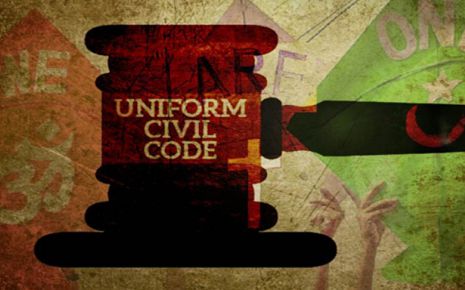Memorandum of Association (MOA) and Articles of Association (AOA): Analysing the Differences
The Memorandum of Association (MOA) and Articles of Association (AOA) are
essential documents that jointly constitute the foundation of a company's
structure.
Memorandum of Association (MOA):
The MOA is a primary document that outlines the fundamental aspects of a company and establishes the basis for its existence. It identifies the company's name, registered office, objectives, authorized share capital, and the scope of activities it is authorized to undertake. The MOA serves as a means of informing the external world about the company's purpose and limitations.
Articles of Association (AOA):
The AOA complements the MOA by specifying the internal rules and regulations that govern the company's day-to-day operations and management. It covers matters such as shareholder rights, director powers, internal procedures, and conduct of meetings. While the MOA focuses on the external aspects and objectives, the AOA is concerned with the internal functioning and relationships among the company's members.
Together, the MOA and AOA form the constitution of a company, providing a comprehensive framework that governs its external activities and internal operations. These documents are submitted during the company's incorporation process and play a crucial role in guiding its governance and conduct.
Differences between MOA and AOA:
Memorandum of Association (MOA) and Articles of Association can be differentiated as follows:
Memorandum of Association (MOA):
The MOA is a primary document that outlines the fundamental aspects of a company and establishes the basis for its existence. It identifies the company's name, registered office, objectives, authorized share capital, and the scope of activities it is authorized to undertake. The MOA serves as a means of informing the external world about the company's purpose and limitations.
Articles of Association (AOA):
The AOA complements the MOA by specifying the internal rules and regulations that govern the company's day-to-day operations and management. It covers matters such as shareholder rights, director powers, internal procedures, and conduct of meetings. While the MOA focuses on the external aspects and objectives, the AOA is concerned with the internal functioning and relationships among the company's members.
Together, the MOA and AOA form the constitution of a company, providing a comprehensive framework that governs its external activities and internal operations. These documents are submitted during the company's incorporation process and play a crucial role in guiding its governance and conduct.
Differences between MOA and AOA:
Memorandum of Association (MOA) and Articles of Association can be differentiated as follows:
- The provisions related to MOA of a Company are covered by Section 4 of the Companies Act. AOA of a Company is the topic addressed in Section 5 of the Companies Act 2013.
- The primary distinction between MOA and AOA lies in their respective functions: MOA outlines the company's powers and objectives, while AOA defines its regulations.
- The main goal of MOA for a Company is to determine what the relationship between the Company and all its shareholders, as well as third parties is. One of the key goals behind establishing an AOA of a Company is to describe the relationship between the company and its internal management.
- In case of any inconsistencies between the two documents, the Memorandum of Association takes precedence over the Articles of Association.
- Registration of the MOA with the Registrar of Companies is a mandatory requirement during incorporation, whereas registration of the AOA is voluntary.
- Changes to the MOA necessitate a special resolution passed at the Annual General Meeting with prior approval from the central government, while amendments to the AOA can only be made through a Special Resolution at the AGM.
- The MOA is the company's founding document and includes all essential legal data about the business with Registrar of Companies (ROC), such as its name, registered address, capital, liability, and primary line of business. The AOA as the name implies, presents the rules, regulations and procedures in internal management of the company.
- The MOA is drafted in terms of the requirements of the Companies Act, 2013. Thus, after the Act, the MOA is the leading document of the firm and no other drafting or filing can be made to contain any information or provision which ignores what is provided in the MOA.
- The AOA is adopted on the basis of Companies Act, 2013, and MOA of the Company. Hence, it cannot incorporate any provisions that contravene with those of the Companies Act or the MOA of the Company.
- The MOA is structured into 6 clauses, each containing specific
information. These clauses include the name clause, which states the
company's legal name, the situation clause, which specifies the registered
address, the objective clause, which outlines the company's business
activities, and the clauses for liability and capital, which provide details
on shareholder liabilities and capital subscriptions. Additionally, the AOA format is divided into tables,
tailored for different company types. For instance, a Company limited by shares
would follow the TABLE F format. Each table contains articles outlining the
company's internal management rules and regulations.
- It is a requirement for all companies, regardless of type, to create their Memorandum of Associations in the designated formats and present them to the ROC at the time of incorporation. However, while drafting Articles of Associations is compulsory for all companies, it is not obligatory to submit them to the ROC during the incorporation process.
- The MOA does not have the ability to be amended retrospectively, whereas the AOA can be amended with retrospective effect.
- Any actions taken beyond the scope of the MOA are automatically considered null and void and cannot be ratified, whereas actions beyond the scope of the AOA can be ratified by shareholders.
- The MOA, being the primary document, dictates the drafting of the AOA, and any conflicting provisions in the AOA are considered invalid.
- The MOA holds a higher authority as the primary legal document, only being subordinate to the Companies Act, while the AOA is subordinate to both the MOA and the Companies Act.
- The MOA outlines the company's relations with third parties, while the AOA defines the relationships among company members.
- While the MOA requires five clauses to be included, the AOA can be structured
according to the specific needs of the organization.
- The MOA is a crucial document for any company as it outlines the main
goals and authorized activities, while also defining the limits within which
the company operates. In essence, it serves as the foundation or primary
charter of the company. On the other hand, the AOA work hand in hand with the MOA to
establish a set of rules and regulations that govern the internal management and
day-to-day operations of the company. These detailed guidelines cover various
aspects such as shareholder rights, director powers, and procedural protocols,
ultimately creating an internal framework for the company's governance and
functioning.
- The MOA is a significant document that contains essential clauses like
the company's name, registered office, objectives, and capital structure. It
serves as a foundation for the company's existence, providing a general
framework. On the other hand, the AOA is more detailed and covers specific rules and
regulations for internal operations. It includes provisions for shareholder
rights, director powers, and internal procedures. While the MOA establishes the
company's basic identity and purpose, the AOA focuses on the intricate
mechanisms that ensure clear regulation within the organization.
- The MOA undergoes amendments through a thorough process that requires a
special resolution and the approval of both shareholders and regulatory
authorities. This ensures that changes to the foundational elements of the
company are made after careful consideration and oversight. On the other
hand, amendments to the AOA are comparatively more flexible. They can be made with the
approval of shareholders through an ordinary resolution, allowing for
adjustments to internal rules and procedures with relative ease.
- The MOA is a document that can be accessed by the public. It can be
examined by anyone who wants to understand the basic elements of the
company, like its name, registered office, objectives, and capital
structure. On the other hand, the AOA is also a document that is open to the public. However, it gives
companies the option to keep certain parts confidential, as long as it abides by
legal rules.
- The degree of inflexibility in the MOA is rather high given that
alterations to its content are often subject to stricter regulatory control
and often necessitate a special resolution and approval from the
shareholders and regulatory authorities. On the other hand, AOA provides more room in terms of
flexibility as amendments to its provisions can be made with shareholder's
approval through an ordinary resolution. The AOA's flexibility provides an
opportunity for companies to make changes and adjustments to their internal
regulation rules according to changing business demand.
- The MOA is aimed at determining the company's relations with the
external environment on the one hand, and defining its legal capacity and
specifying the limits of its authority to conduct different activities. It
is a charter document that provides the basic framework for the company's
goals, objectives, scope and those operations authorized by the charter. On
the opposite side, AOA
are mainly concerned with the internal affairs of the company as they control
relationships between shareholders and outline internal management procedures.
Both the MOA and AOA have significant functions during incorporation of the
company, the former is filed to the registrar so as to create its legal
structure and the latter provides directives on internal management and
operations.
- One of the essential aspects in the MOA is object clause, which
describes and defines business activities that are authorized by the
company. This clause outlines the available boundaries and limits of the
company's operation. As opposed to this, the AOA may refer to the object clause but mainly focuses on
in-house rules, which govern the company's operations. MOA establishment creates
limits for the authorized activities of the company while AOA details elements,
such as shareholder rights and director powers, establishing an internal
governance framework for a company.
- The MOA is a document that ties the company and its membership to
external actors, defining the legal structure of company and its permitted
actions. It defines the company's purpose, its boundaries, and capital
authorized to be issued, on which external relations would be built. On the
contrary, AOA
internally binds the company's members who outline their rights,
responsibilities and relationships within the company. AOA is mostly concerned
with managing the internal forces of the organization like rules on shareholder
rights, director powers, and internal procedures that provide clarity and
regulation within the members themselves.
- The MOA is the highest step in the corporate world, since it is a founding document that describes the company as such, defines its main objectives, allowed activities and fundamental constituents. It gives the overall structure that defines the company's mission and is also its legal identity. However, AOA are subservient and assume their powers from MOA. The AOA concentrates on intricate rules and regulations regarding the internal management and operations of the firm, but it is a secondary document that can be considered complementary to the MOA since its provisions are aligned with the broader goals and scope outlined in that Memorandum.
Law Article in India
Legal Question & Answers
Lawyers in India - Search By City
LawArticles
How To File For Mutual Divorce In Delhi

How To File For Mutual Divorce In Delhi Mutual Consent Divorce is the Simplest Way to Obtain a D...
Increased Age For Girls Marriage

It is hoped that the Prohibition of Child Marriage (Amendment) Bill, 2021, which intends to inc...
Facade of Social Media

One may very easily get absorbed in the lives of others as one scrolls through a Facebook news ...
Section 482 CrPc - Quashing Of FIR: Guid...

The Inherent power under Section 482 in The Code Of Criminal Procedure, 1973 (37th Chapter of t...
The Uniform Civil Code (UCC) in India: A...

The Uniform Civil Code (UCC) is a concept that proposes the unification of personal laws across...
Role Of Artificial Intelligence In Legal...

Artificial intelligence (AI) is revolutionizing various sectors of the economy, and the legal i...








Please Drop Your Comments